Aurora Photos: See Breathtaking Views of the Northern Lights
Amazing auroras
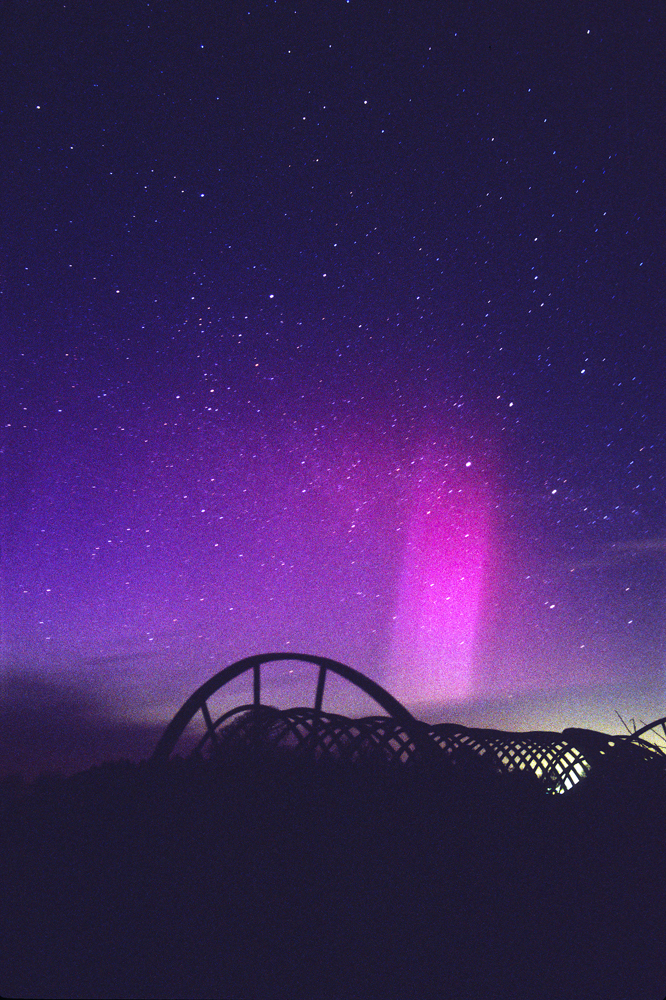
The aurora borealis — a cosmic event caused by charged electrons interacting with elements in Earth's atmosphere — creates breathtaking displays of colored lights that have long fascinated spectators and photographers. The charged electrons originate from solar wind, and, "the aurora is the only visible evidence that the Sun and the Earth are a system connected by more than sunlight," according to NASA.Jim Henderson, who has photographed more than 300 aurora displays in northeast Scotland, spoke with Live Science about how to nail a great shot of the impressive sky shows. Here are some of his favorite photos. [Read full story about how to photograph auroras]
This image was taken at Harestone, near Crathes Castle, on April 4, 1990. The photo captures a glowing purple nitrogen ray.
Corona zenith
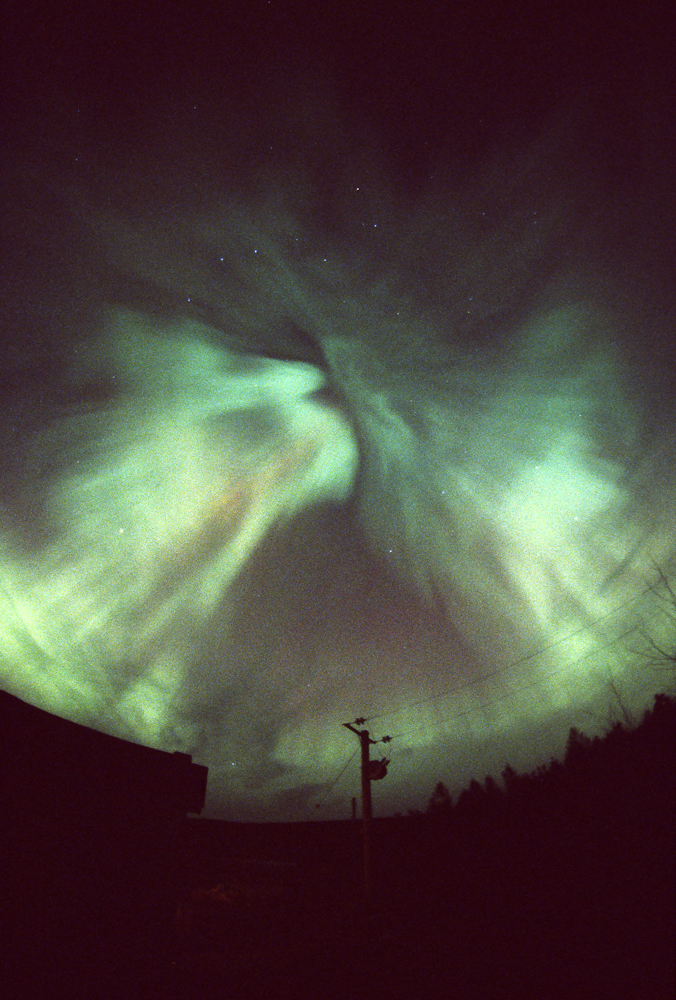
This display exploded in activity over Deeside (25 miles or 40 kilometers west of Aberdeen) before passing southward, creating a moving zenith that glowed green with low-level oxygen gas.
Date: April 6, 2000
Ursa Major
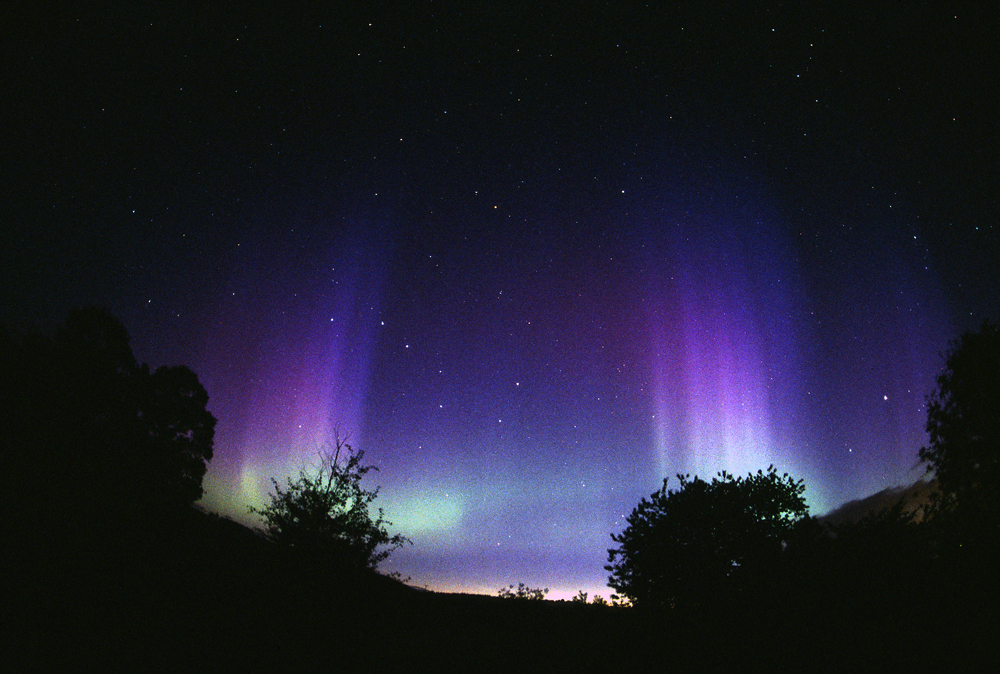
Looking directly northwards near the village of Torphins (west of Aberdeen), Henderson captured this summer display just after midnight. The purple coloration is possibly an effect of nitrogen activity, but may also have been due to air quality in the region.
Date: July 27, 2003
Recumbent Stone Circle
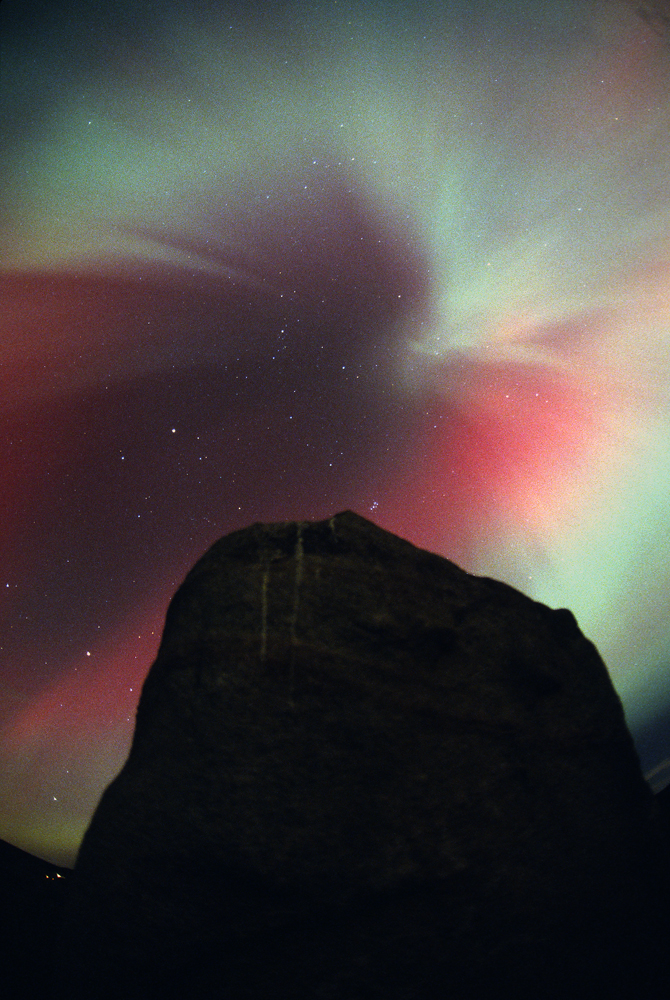
Scotland's Tomnaverie Stone Circle is one of the oldest spiritual settings to view the auroras. Henderson said that shooting at the Recumbent Stone Circle (pictured here) was one of his most moving experiences as a photographer.
Get the world’s most fascinating discoveries delivered straight to your inbox.
"This special place dating back to the Bronze Age around 2000 B.C. [was] used as a spiritual gathering place by my ancient ancestors who may also have witnessed such a display."
Date: Nov. 20, 2003
Near Aberdeen

This display took place at the unusual hour of 4:00 p.m. local time (auroras are usually only visible later at night), looking eastwards towards Aberdeen.
Date: Nov. 20, 2003
Hyakutake sighting
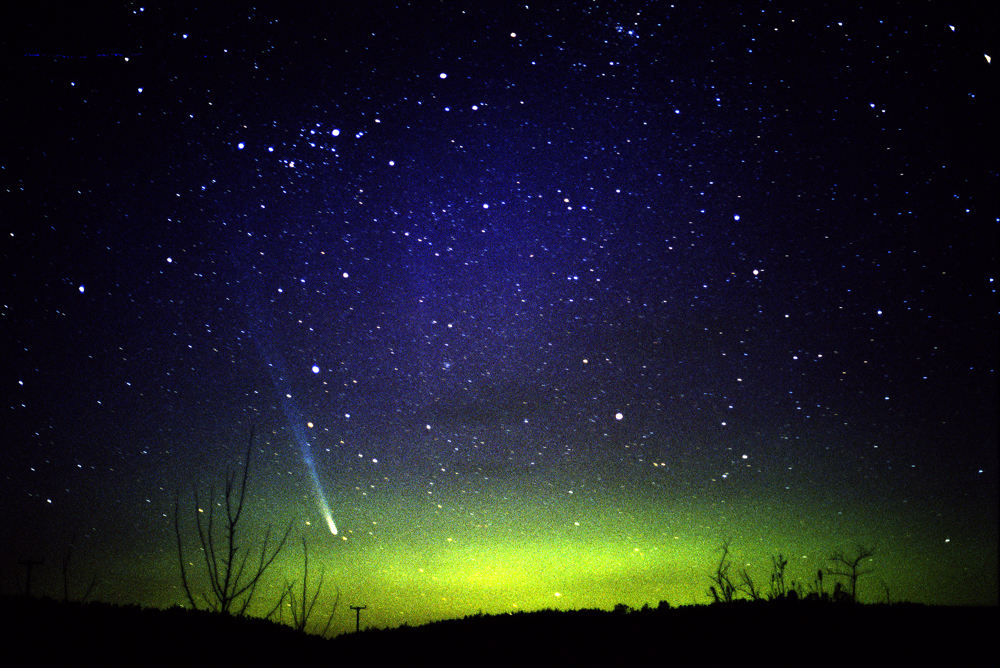
Discovered just a few months before this photo was taken on Jan. 31, 1996, Henderson captured the Hyakutake comet as it passed very close to Earth. According to a report in the Journal of the British Astronomical Association, the comet is a long-period comet and is only visible from Earth every 70,000 years.
Date: April 17, 1996
Red, green and yellow

Floating over Royal Deeside, Henderson said, "[t]he center of the crown or zenith of a corona can have unimaginable shapes which are continually moving." Here, the lights arranged themselves to resemble a blooming flower.
Date: Nov. 9, 2004
Rare folded arc
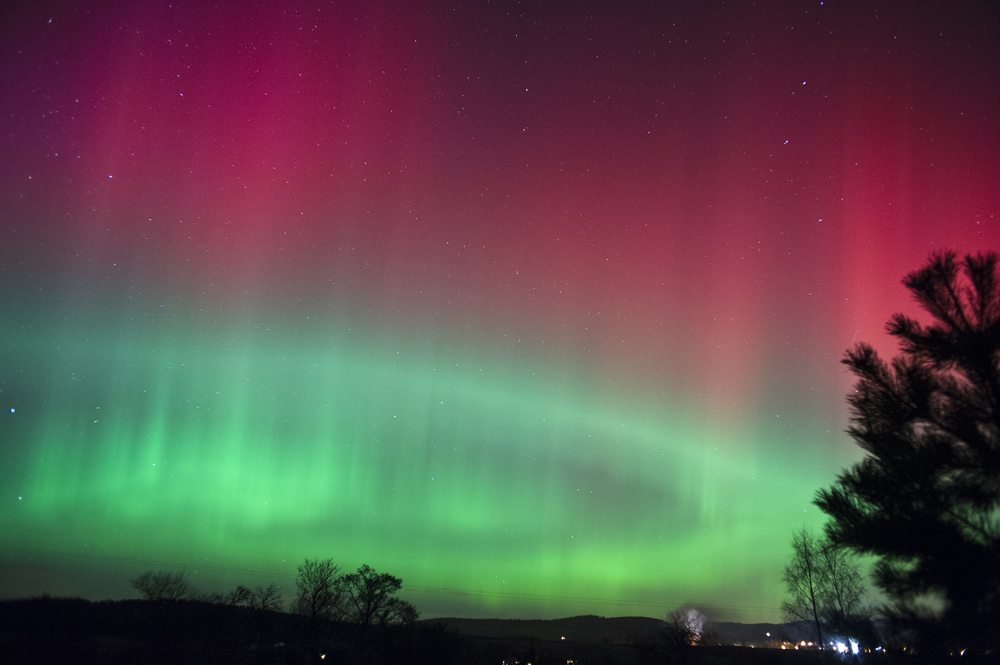
In an unexpected display (the best Henderson said he had seen since the end of the previous solar cycle in 2006), the aurora offered a fairly rare occurrence of this folded arc, despite initial forecasts of reduced activity.
Date: Feb. 27, 2014
Early aurora sighting
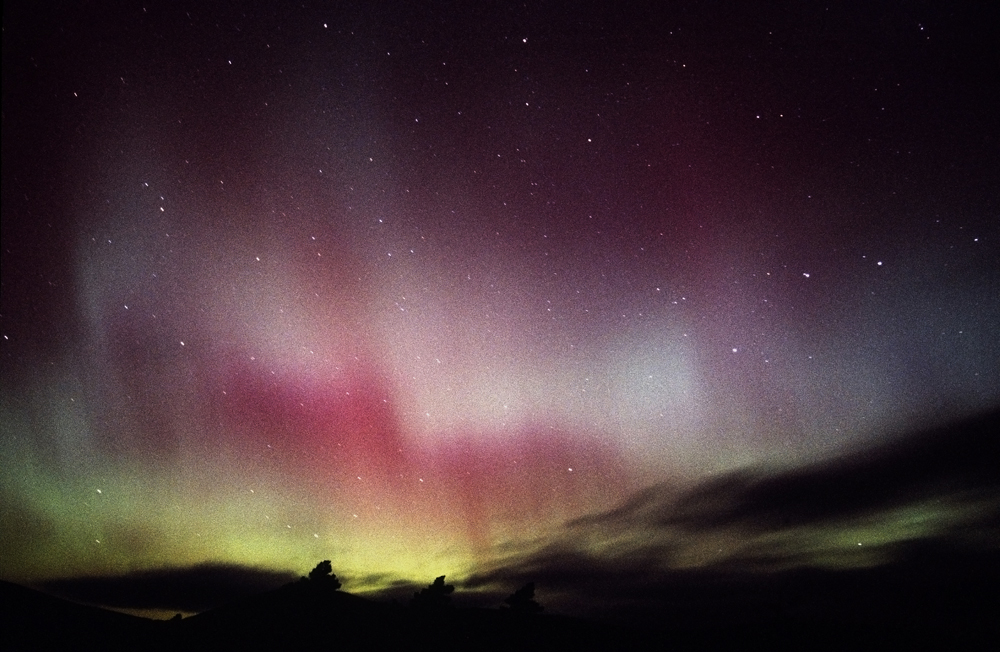
This photo is one of the first Henderson ever took of an aurora display. The clouds cleared just after midnight, making the stars and auroral lights visible. Henderson tackled a steep climb out of Glen Dye and scaled a rocky outcrop to nail this shot.
Date: September 1989
Snowy green and red

Working in less-than-ideal light conditions, due to passing snow flurries, Henderson captured this burst of activity during the first aurora display since one that spanned the new year.
Date: March 6, 2016
Corona rays burst

With the street lights of Torphins visible at the bottom left of the photo, Henderson captured these spectacular corona rays on a winter evening, looking toward Aberdeen.
Date: Nov. 20, 2003

 Live Science Plus
Live Science Plus





